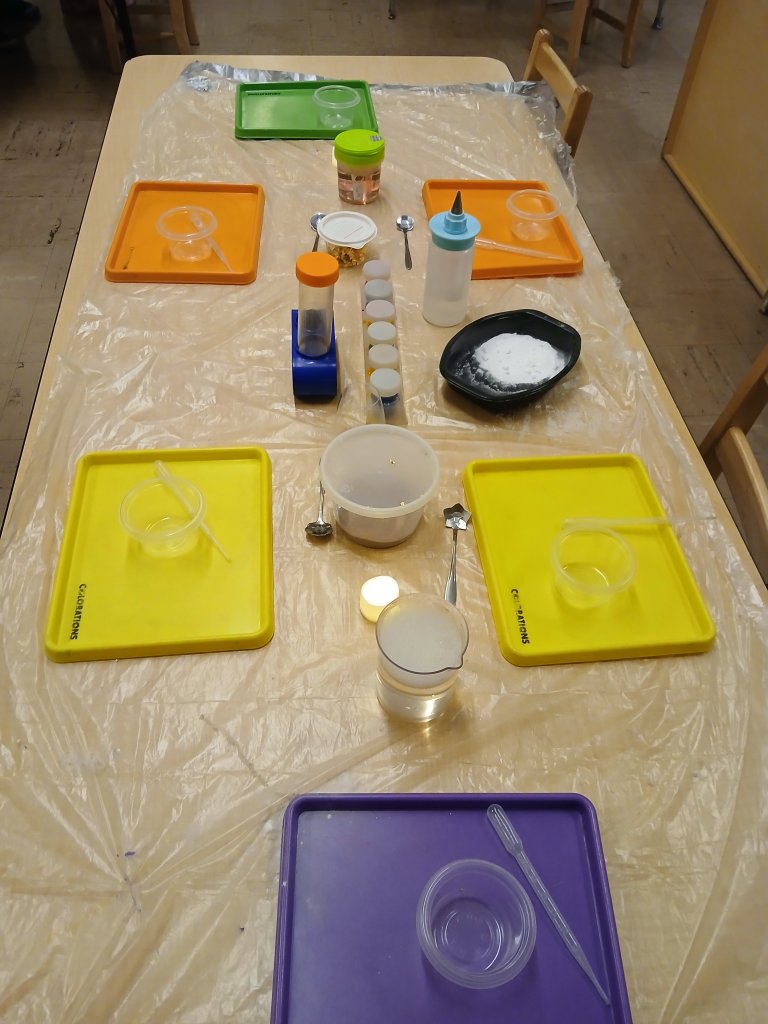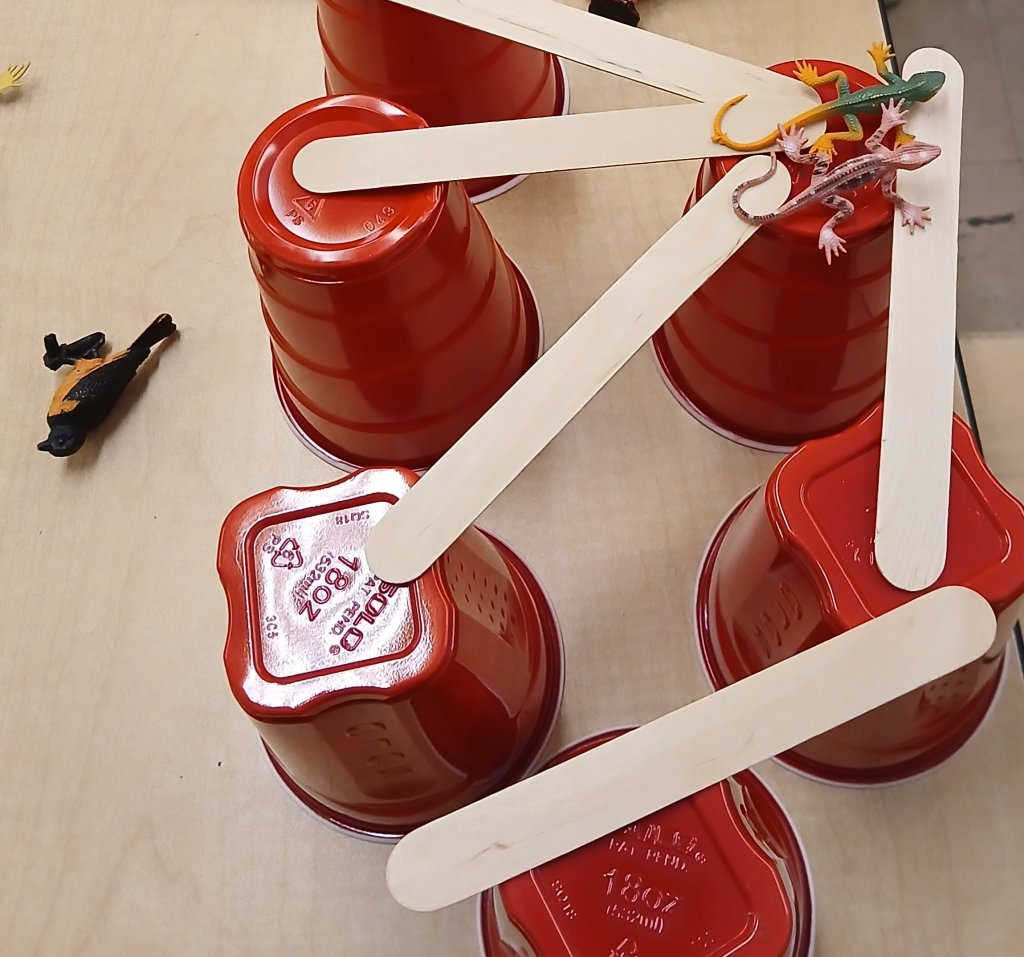A Guide to Preschool STEAM Activities
Lessons focused on science, technology, engineering, arts, and math give young learners an engaging way to explore new concepts.
Your content has been saved!
Go to My Saved Content.Last fall, I began teaching at a mixed-age (2.9 to 5 years old) preschool program with dedicated STEAM (science, technology, engineering, arts, mathematics) activities in the afternoon. Initially, the acronym evoked images of bubbling chemicals and complex mathematical equations. My philosophy while working with young children over the last 12 years has always centered on creating a play-based and hands-on learning environment.
In my new teaching role, I was excited and a bit intimidated to incorporate a more inquiry-based approach into my daily lessons. I was already aware of the benefits of STEAM for children in K–12, and I believe that preschoolers, who are curious by nature, shouldn’t have to wait for primary school to be exposed to this interdisciplinary approach to education.
Learning how to plan successful STEAM projects for my preschoolers was a process of trial and error. Some days, I developed lessons that were too short, and other days, we ran out of time just as the children were becoming engaged. I also had to help children shift away from the expectation that they would have a product to take home at the end of every lesson.
Together, we learned to build our patience for science experiments that didn’t produce immediate results. Through these experiences, I discovered that successful STEAM activities require flexible planning, thoughtful facilitation, and differentiation for a mixed-age classroom with varying skill sets. With the right mindset and strategies, I believe that STEAM can be seamlessly incorporated into any preschool classroom.
Setting Up for Success
There’s no getting around it, STEAM activities can quickly become messy and overwhelming. While making marshmallow slime, a child threw cornstarch high into the air before I even had the chance to explain our project for the day.
Instead of moving away from these messy activities, I’ve used the following tips to make cleanup more manageable:
- Cover the tables with newspaper or disposable tablecloths.
- Use smocks to protect clothing.
- Provide students with individual trays for their materials to stay organized.
- Do your STEAM activities outside when possible. The weather and your surroundings may spark ideas for future STEAM projects.
Playing the Role of Facilitator
While facilitating STEAM activities for preschoolers, it’s important to ask open-ended questions to promote their critical thinking and problem-solving skills. In a series of articles examining the benefits of STEAM for young children, researchers Sandra Linder and Angela Eckhoff highlight the value of using person-oriented and process-oriented questions to help students become great problem-solvers. In addition to assessing student learning, I’ve found that open-ended questions are a great way to get students to make meaningful observations during the learning experience.
Here are some open-ended questions to ask during your STEAM activities:
- What do you think will happen if _____?
- What changes did you notice?
- How can we make this bridge stronger (or weaker, taller, longer, etc.)?
- What else can we try?
In addition to asking thoughtful questions, modeling the use of simple tools is key to facilitating successful STEAM activities. Young children may be unfamiliar with tools like eyedroppers or magnets. Taking the time to explain each tool and to demonstrate how to use them properly can help children feel more confident and increase their participation.
Planning activities with more than one solution can also encourage children to come up with creative ways to achieve a desired outcome. This approach can minimize the frustration that young children might feel when their project doesn’t exactly match their peers’.
Strategies for Differentiation
Working in a mixed-age classroom has emphasized the importance of selecting developmentally appropriate materials for STEAM projects. If you have young students who still put things in their mouths, avoid activities with objects that could pose a choking hazard. Planning group projects, like building bridges or tall towers, is a great way to ensure that everyone plays a role and works together. In these types of activities, all children participate in the same task, but older children can design and build more complex structures.
Scaffolding activities for different age levels has also provided a way for me to ensure that lessons are engaging, appropriate, and accessible. Here’s how I might scaffold a lesson about melting ice cubes that have plastic gems frozen inside. For 3-year-olds, I would focus on the sensory experience and encourage children to melt the ice with warm water and eyedroppers to retrieve the gems. For children who are 4 or 5, I would incorporate prediction making and introduce salt water as a method for melting the ice faster. To extend the learning, you could ask the children to brainstorm other methods for melting ice.
3 Examples of Simple STEAM projects
The best way to implement STEAM in your classroom is to jump right in! I’ve created a lesson plan with different options, but here are a few simple ideas to try:

1. Potion lab
Materials: Food coloring, baking soda, vinegar, eyedroppers, soapy water, plastic containers, and learning trays or place mats to designate each child’s space. Provide students with a plastic container and an eyedropper on a tray.
Encourage them to create a magical potion with special properties. What can their potion do?
Through this activity, students learn about color mixing and the chemical reaction between baking soda and vinegar.
2. Building a bridge challenge
Materials: Plastic cups, Popsicle sticks, and small animal figurines.
Challenge your preschool students to build a bridge so that their animals can safely go from one end of the table or carpet to the other side.

Which bridge can hold the most animals? How many cups are needed for the shortest bridge possible?
This activity promotes early engineering concepts and encourages teamwork.
3. Magnet painting
Materials: Magnet wands, paper, washable paint, paper clips, metal washers, plastic and/or wooden items.
Squirt paint on construction paper, and place metal, plastic, and/or wooden items on top of the paper with paint. Move the magnet wand under the paper.
What items are attracted to the magnet? How do the colors change as they move across the paper?
Through this activity, children learn that magnets are attracted to metal, and they also create a colorful piece of artwork.
Incorporating STEAM into preschool classrooms is manageable, accessible, and valuable for your students. Taking small steps toward this curriculum is worthwhile and might lead to a lifelong love of STEAM-based learning.
